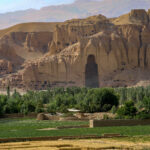
In the far north of Pakistan, where the sky leans down to kiss snow-covered peaks, lies a valley so beautiful it feels like a dream whispered by the earth itself Hunza Valley. Cradled between the majestic Karakoram Range and ancient glaciers, Hunza is more than a destination; it’s a feeling that stays with your soul long after you leave. It’s the crown jewel of Gilgit-Baltistan, Pakistan, and every traveler who visits leaves a piece of their heart behind.
Where is Hunza Valley Located
When travelers ask, “Where is Hunza located?”, the answer unfolds like a story written by the mountains themselves. Hunza Valley lies in the northern region of Pakistan, within Gilgit-Baltistan, stretching gracefully along the legendary Karakoram Highway often called the Eighth Wonder of the World.
This breathtaking valley rests near the China border, connected through the majestic Khunjerab Pass, where the winds whisper tales of ancient trade routes and timeless beauty.
Perched at an elevation of about 2,438 meters (7,999 ft), Hunza Valley is surrounded by towering peaks such as Rakaposhi, Ultar Sar, and Ladyfinger Peak, which stand like silent guardians of this paradise.
The Islamabad to Hunza distance is approximately 600 kilometers, a mesmerizing 12–14-hour drive along the Karakoram Highway, offering spellbinding views of mountains, rivers, and valleys. The Naran to Hunza distance is nearly 330 kilometers, while the Skardu to Hunza distance spans about 270 kilometers, each route promising an unforgettable journey.
Every kilometer brings you closer to heaven, as turquoise rivers, cherry blossoms, and snow-glazed peaks guide your way through the poetry of the mountains, a road trip that feels less like travel and more like stepping into a living dream.
History of Hunza Valley
For centuries, Hunza was a princely state ruled by the Mirs of Hunza, until it joined Pakistan in 1974. Strategically located along the ancient Silk Route, it served as a vital trade bridge between China, Central Asia, and South Asia.


The ancient Baltit Fort and Altit Fort stand as proud guardians of this history fortresses of stone that watched over centuries of trade, culture, and migration. Even today, walking through Karimabad Hunza feels like stepping into a living museum of resilience and grace.
Why Hunza Valley is Famous
Hunza Valley Pakistan is known for its majestic mountains, serene lakes, hospitable people, and unique culture. Its crystal-clear Attabad Lake, picturesque Eagle Nest viewpoint, and legendary Passu Cones make it one of the most photographed valleys in the world.




Hunza’s beauty is more than visual, it’s emotional. From the peaceful aura of Karimabad Hunza to the mirror-like waters of Attabad Lake Hunza, everything here whispers calm and wonder.
Best Time to Visit Hunza Valley
The best time to visit Hunza depends on what you seek.
Spring (March–May) dresses the valley in pink and white apricot blossoms. Summer (June–August) is perfect for treks, boating, and sightseeing, with comfortable temperatures around 25°C. Autumn (September–November) transforms Hunza into a golden paradise, while winter (December–February) turns it into a silent, snow-covered dreamscape.
For photographers and nature lovers, April to October is the most ideal season.
Hunza Valley Weather – Seasons Painted in Magic



The Hunza weather changes like poetry each season bringing a new color, a new rhythm, and a new life to the valley.
Spring (March to May)
The valley awakens in a sea of cherry and apricot blossoms. The Hunza temperature during spring ranges between 15°C to 20°C, perfect for walks through Karimabad Hunza and Aliabad Hunza. Petals float in the wind like snowflakes of color, and the air smells of renewal.
Summer (June to August)
Summer in Hunza is a paradise for adventurers. The Hunza Valley weather stays mild, averaging 25°C to 28°C, making it perfect for boating on Attabad Lake, trekking to Eagle Nest Hunza, or exploring Passu Cones.
Autumn (September to November)
Hunza transforms into a golden wonderland. The trees glow in crimson, amber, and rust. Temperatures range from 10°C to 15°C, offering postcard-perfect landscapes.
Winter (December to February)
A soft silence descends over Hunza. Snow blankets the valley, and the Hunza temperature often drops below 0°C. Karimabad Hunza weather becomes crisp and mystical, attracting travelers seeking serenity and snow-covered mountain magic.
No matter the time of year, the weather in Hunza Valley never fails to enchant it paints the same land with a thousand faces.
Hunza People, Language, and Culture – The Heart of the Valley
The people of Hunza Valley are renowned for their warmth, wisdom, and remarkable longevity. Their diet of apricots, grains, and glacier water is said to contribute to their long, healthy lives.
Festivals like Ginani (Harvest Festival) and Nowruz reflect Hunza’s joy and harmony. Here, life flows slowly, like the Hunza Water, and smiles come easily.

Hunza Traditional Clothing and Famous Crafts
Men wear woolen Hunza caps known as Pakol, while women adorn long embroidered dresses and colorful scarves. Traditional embroidery, handmade jewelry, and wool shawls display the skill and soul of Hunza artisans.

Local markets in Karimabad and Aliabad are filled with handwoven caps, carved wooden crafts, gemstones, and dried fruits each telling its own story of Hunza’s culture.
Famous Handicrafts and Things to Buy from Hunza
Hunza is a paradise for art lovers and collectors. Visitors can find:
- Handwoven wool shawls and traditional caps.
- Gemstones and silver jewelry crafted by local artisans.
- Wood carvings and embroidered fabrics showcasing intricate Hunza patterns.
- Organic dry fruits, apricot oil, and local honey, perfect as souvenirs of health and purity.
These crafts represent the creativity and self-reliance that make Hunza famous across the world.
Hunza Valley Famous Food – Flavors of Simplicity
Hunza cuisine reflects its simplicity and purity. Locally grown apricots, barley, and walnuts form the base of most dishes. Must-try foods include Chapshuro (Hunza pizza), Harissa, Diram Phitti, and Go-Lee.
At Café de Hunza, the walnut cake and apricot coffee are legendary. You’ll also find cozy spots like Moksha Resort Hunza, Hard Rock Hunza, and Luxus Hunza Attabad Lake Resort, each offering scenic dining with mountain views.
Hunza Attractions and Places to Visit


The valley overflows with wonders that blend history, adventure, and serenity.
The ancient Baltit Fort and Altit Fort whisper tales of royalty. Attabad Lake Hunza, formed by a landslide in 2010, now gleams like turquoise silk under the sun. Eagle Nest Hunza offers sunsets that set the sky ablaze, while the Hussaini Suspension Bridge tests the courage of every traveler.
Further north, the Passu Cones rise like stone guardians, and Khunjerab Pass marks the world’s highest border crossing between Pakistan and China. Every corner of Hunza, from Karimabad to Gulmit, is poetry in motion.
Hunza Hotels and Where to Stay
Whether you seek luxury comfort or a budget retreat, Hunza Valley offers accommodation for every type of traveler. From lakeside resorts to cozy inns nestled among apricot trees, every stay in Hunza feels like part of the experience.
Top 5 Hotels in Hunza for a Luxurious Stay
If you’re looking for elegance and breathtaking views, these hotels redefine comfort in the mountains:
- Luxus Hunza Attabad Lake Resort – Overlooking the turquoise Attabad Lake, offering serene views and world-class amenities.
- Pearl Continental (PC) Hunza – A five-star experience surrounded by stunning landscapes and luxury facilities.
- Hunza Serena hotel – A blend of traditional architecture and modern comfort, with panoramic mountain vistas.
- Eagle’s Nest Hotel Hunza – Famous for its sunrise and sunset views over Rakaposhi and Ultar peaks.
- Mountain Story Resort Hunza – A modern boutique stay combining luxury, culture, and a peaceful mountain atmosphere.
Best Budget Hotels in Hunza
For travelers seeking affordability without compromising comfort, Hunza has plenty of welcoming options:
- Old Hunza Inn – A charming guesthouse known for its hospitality and traditional ambiance.
- Hilltop hotel – Centrally located in Karimabad with budget-friendly rates and mountain-facing rooms.
- Mulberry Hotel Hunza – Clean, cozy, and perfect for families or backpackers.
- Baltit Heritage Inn – A short walk from Baltit Fort, offering simple rooms and scenic views at great value.
- Hunza View Hotel – A well-known mid-range option with beautiful valley views and easy access to local attractions.
Staying in Karimabad Hunza
If you plan to stay in Karimabad, the heart of Hunza, you’ll find many hotels and guest houses offering both comfort and convenience. From heritage-inspired inns to modern lodges, every corner offers warm hospitality and breathtaking views of the valley.
Hunza Distance Guide
- Islamabad to Hunza: 600 km (12–14 hours)
- Lahore to Hunza: 790 km (15–16 hours)
- Gilgit to Hunza: 100 km (2.5 hours)
- Skardu to Hunza: 270 km (6 hours)
- Naran to Hunza: 330 km (8–9 hours)
- Murree to Hunza: 550 km (12 hours)
Each route is a journey through valleys, glaciers, and sky-touching peaks, with the Karakoram Highway guiding travelers to paradise.
Hunza Tour Packages and Cost
Many travelers search for Hunza tour packages, which vary depending on the season and comfort level. A typical 5 to 7-day Hunza tour from Islamabad costs between PKR 45,000 to 90,000 per person, including transport, accommodation, and sightseeing.
Luxury Hunza honeymoon packages and family tours can also be customized with visits to Attabad Lake, Passu Glacier, and Khunjerab Pass.
For solo travelers, local transport and guesthouses make Hunza surprisingly affordable.
Internet, Safety, and Travel Tips for Hunza
Hunza is among the safest regions in Pakistan, with friendly locals and a peaceful atmosphere. Tourists, especially solo female travelers, find it welcoming and secure.
Internet in Hunza is available in most hotels and cafes, though mobile signals can be weak in remote areas. Carry some cash, as ATMs are limited, and pack warm clothes even in summer the nights can get chilly.
Above all, bring curiosity and respect; Hunza rewards both in abundance.
Hunza Economy and Lifestyle



The Hunza economy thrives on tourism, agriculture, and small-scale trade. Locals cultivate apricots, apples, and cherries that travel across Pakistan. Education is highly valued here, and women play an active role in business, education, and community leadership.
Hunza’s balanced lifestyle between nature and progress has made it one of Pakistan’s most inspiring regions.
FAQs About Hunza Valley
1. How far is Hunza Valley from Islamabad?
It’s about 600 km from Islamabad, taking 12–14 hours by road via the Karakoram Highway.
2. What is Hunza famous for?
Hunza is famous for its breathtaking mountains, lakes, ancient forts, and the remarkable longevity of its people.
3. What language is spoken in Hunza?
Locals speak Burushaski, Shina, and Wakhi, though Urdu and English are also common.
4. What is the best time to visit Hunza Valley?
From April to October, when the roads are open, the weather is pleasant, and the valley bursts into color.
5. Is Hunza safe for tourists?
Yes, Hunza is one of the safest places in Pakistan. The locals are warm, respectful, and welcoming.
6. What is the height of Hunza Valley?
Hunza stands at an elevation of about 2,438 meters (7,999 feet) above sea level.
7. How many days are enough for Hunza?
A 5 to 7-day trip allows enough time to explore major attractions like Attabad Lake, Baltit Fort, and Khunjerab Pass.
8. Can we visit Hunza in winter?
Yes, though some routes may close due to snow. Winter in Hunza offers peace, snow-covered views, and a slower pace of life.
Final Thoughts – The Soul of Hunza

In the heart of the Karakoram, Hunza Valley stands as a living poem, one that speaks of peace, resilience, and unspoiled beauty. From the smiles of its people to the silence of its peaks, every part of Hunza touches the traveler’s soul.
Those who visit once always return in memory, because Hunza is not just a destination it’s a feeling that never fades.





Very informative. Would love to visit Hunza one day